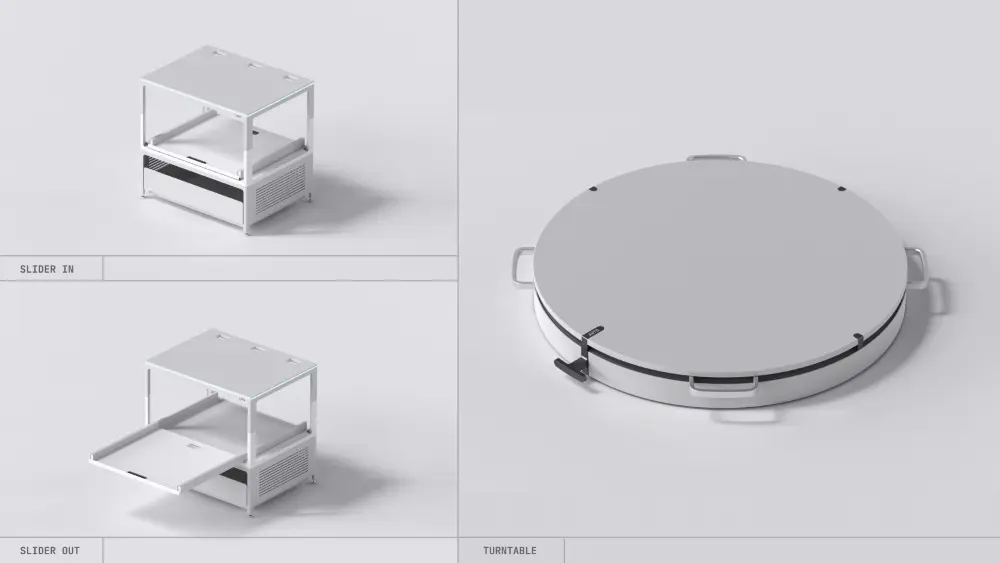Designing your lab space for maximum efficiency

Designing a laboratory is complicated. Researchers must balance safety and functionality while providing an enjoyable environment for workers. Too much focus on one area and a lack of focus elsewhere can significantly impact productivity. Furthermore, a lack of foresight can mean multiple costly layout overhauls as the laboratory evolves. This article will cover the important factors to consider in laboratory space planning to ensure futureproofing and productivity.
What are the main factors to consider when planning your lab space?
User-centered design
While decisions about lab layout will generally be made by senior management, it is important to gather insights from the people performing experiments. Ultimately, laboratory design layout impacts their daily lives, and their efficiency dictates the lab’s ability to meet its research objectives. Failure to listen to hands-on lab users can lead to inefficiencies and feelings of frustration.
Workflow optimisation
Researchers must position equipment strategically to maximise usability 1. Having a dedicated area for centrifuges may seem like a good idea, but it can restrict usability and force researchers to walk long distances through different safety zones with samples and plates. Minimising unnecessary movement is essential for reducing the hands-on time required for experiments, which can make a big difference in efficiency.
Zoning
Maintaining zones for different tasks is essential, especially those that are sensitive to contaminants or contain hazardous materials. Separate zones for mammalian cell culture and microbiology are obvious examples. Other instances include a dedicated hood for working with chemicals and a well-delineated separation between PCR gel electrophoresis and quantitative PCR machinery 2. Thinking through the entire workflow can help with proper zoning and promote good laboratory practices.
Sustainability
Implementing sustainable practices in the planning stage of laboratory layout can reduce costs and make the laboratory more environmentally friendly. These measures include maximising the use of LED and natural lighting, using low-flow fixtures to save water, and choosing durable materials for lab fixtures.
Safety
Researchers must consider many factors when designing a safe laboratory. Rooms must be well-ventilated, which is especially important when harsh chemicals are used. The lab must also be laid out to allow for easy and unobstructed evacuation routes in case of emergency. Proper storage facilities for chemicals, biological waste, and liquid nitrogen dewars are necessary 3. Researchers must also be cautious about power overloading by connecting multiple high-energy machines to a single outlet.
Storage
Storage must be appropriate to the content, such as chemicals 3. However, it’s important to keep storage as user-friendly as possible. This can mean setting aside a section within each zone for zone-relevant supplies or placing supply-heavy zones next to storage rooms. Furthermore, storage is a fantastic way for researchers to maximise the use of vertical space in the lab, so they should consider placing shelves above working areas.
Lighting and windows
Adequate lighting is vital in research, as poorly lit working areas are more likely to cause accidents and can reduce efficiency. Natural light is especially important for providing a positive working environment, reducing eye strain, and improving the mental health of those working in the lab. However, windows can also pose the threat of contamination; therefore, certain zones with a contamination risk should not have windows that can be opened.
Noise control
Some machinery and equipment can generate noise, and with multiple researchers working, the laboratory can be noisy. This means that office space should be as far removed as possible from sources of laboratory noise. If made of appropriate materials, windows and doors can provide sufficient acoustic barriers. In some instances, properly monitoring noise levels may be essential to comply with safety regulations.
Accessibility
Laboratory and office spaces must be accessible to all individuals regardless of physical ability. This promotes inclusivity and allows laboratories to draw from a broader talent pool during recruitment. Clearly defined and sufficiently wide passages through the laboratory space also help improve efficiency and safety.
Recreation
While it’s essential to have dedicated office and lab space, providing recreation areas where researchers can chat and take a break is equally important. These spaces help boost morale and provide an opportunity for informal scientific discussions, which are common sources of new ideas.
Flexible automation solutions
Implementing the right kind of automation within a lab space can help you maximise your footprint while improving lab productivity, innovation and even safety. By choosing modular solutions designed for open working, labs of any size, with any level of workforce skill or capacity, running any assay and integrating any instrumentation can still automate their processes without sacrificing space, safety or protocols.
Automata’s LINQ is has been designed with the needs of modern labs in mind, prioritising usability, flexibility and the removal of human iteractions.
We call our approach to automation design ‘open, integrated automation‘.

LINQ is modular and flexible with a variety of configurations available. The system can expand with you, is the same footprint as a regular lab bench, and has the option to prioritise storage over transportation features if needed.

LINQ is accessible and designed to allow front-to-back access. With different configurations, you can situate LINQ anywhere in the lab, while the Scara robotic arm is completely safe to work alongside so you’re never restricted on how you can use the bench and when you can access instruments


LINQ is future-proofed. Because lab priorities and goals rarely stay the same for long, we’ve put flexibility at the heart of our platform. By easily automating end-to-end workflows, you remove the burden on people in the lab, and the frustrations often felt when lab spaces are crowded, and equipment is unreliable.
Whatever lab space you’re designing, consider implementing automation that frees your people from the constraints often felt by heavy reliance on static robotics. This will create an environment where people are productive, safe, and fulfilled while ensuring that whatever space you develop now remains effective for years to come.
References
1. Tsai ER, Tintu AN, Demirtas D, Boucherie RJ, de Jonge R, de Rijke YB. A critical review of laboratory performance indicators. Crit Rev Clin Lab Sci. 2019;56(7):458-471. doi:10.1080/10408363.2019.1641789
2. Hirschhorn JW, Avery A, Schandl CA. Managing a PCR Contamination Event in a Molecular Pathology Laboratory. Methods Mol Biol Clifton NJ. 2023;2621:15-26. doi:10.1007/978-1-0716-2950-5_2
3. National Research Council (US) Committee on Prudent Practices in the Laboratory. Prudent Practices in the Laboratory: Handling and Management of Chemical Hazards: Updated Version. National Academies Press (US); 2011. Accessed May 28, 2024. http://www.ncbi.nlm.nih.gov/books/NBK55878/

